Back to Page
Amazon
Beware Of These 10 Most Common Amazon Seller Scams
Beware Of These 10 Most Common Amazon Seller Scams


Back to Page
Amazon
Beware Of These 10 Most Common Amazon Seller Scams

Amazon scams are not new. They have been around for quite a while. With the increasing number of sellers and a low barrier for entry, the risk of seller fraud has been increasing. A recent study claimed that 100 new counterfeit accounts are made daily.
But Can That Ever Happen To You?
Well, the scammers are getting more and more smart and sophisticated day by day. They thoroughly know Amazon and try to use convincing language in their emails. You could be scammed and you might not even have a hint about it. These scams tend to increase a lot in the hustle and bustle of the holiday season. With the quarter four being round the corner, you should also be aware of the scams that are going on Amazon. Our Amazon consulting experts have created a list of 10 most common Amazon scams you should be aware of.
10 Most Common Amazon Scams:
Amazon Scam #1: The Phishing For Account Info Scams
Phishing is a term used when a scammer sends fake email ID posing as Amazon and tries to acquire the personal details from you. First, they send a mail containing links to the seller and when clicked the links will redirect to a whole new space which will ask for your account credentials and credit card information. Amazon has introduced two-step verification code to circumvent the increase of phishing scams. Even if you are not aware of phishing scams, you should read about them because it is one of the most common types of scams.

Amazon Scam #2: The Amazon / eBay Dropshipping Scams
Ever received an eBay order in the Amazon box? At present, thousands of sellers are trying to make quick money by selling Amazon products on eBay at inflated prices. Whenever an order is received, the drop shipper will purchase the same product from Amazon, deliver it to the customer, and keep the difference.
How is that bad? Recently, these fraud drop shippers have been buyingand filing bogus A-Z claims after the product is delivered to eBay customers. This way the drop shipper gets the refund and also the price from the eBay buyer. And the poor Amazon seller has to lose FBA fees as well as the cost of the product. They don’t just harm financially, but such returns also harm sellers’ reputations, which can also lead to account suspension.

Amazon Scam #3: The Review Scams
Competition is fierce in Amazon and sometimes it gets sour. Sellers try to harm other sellers’ credibility by writing fake reviews, which are also “verified.” This can destroy a seller’s reputation and the sales can drop drastically. Some sellers also upvote the existing negative reviews by clicking “yes” or “was it helpful.” They do it until the review is prominently reflected on the detail page. In some cases, such tricks have been shown to reduce conversion rates by 50%.

Amazon Scam #4: The Sponsored Ads Scams
If your Amazon PPC budget is exhausted at the starting of the day itself, then beware, you are a victim of Amazon Sponsored Ad Click scam. Your competitors can click on your Amazon Sponsored Product Ads until your budget is completely exhausted. This not only increases your spend and ACOS way too much but also decreases your conversion rates to a greater extent. They usually do this on weekends when sales tend to be high and there is no one to keep a watch on.

Amazon Scam #5: The Inventory Tie Up Scam
A malicious seller can use a real or fake credit card to buy all your inventory just before the holiday season so that you have no products to sell during the busiest time of the year. Even worse, these sellers can list their products on your listing to make more sales. Once the holiday season ends, the evil sellers return the products and get a refund. You can combat such scams by setting quantity limits on the number of units sold per transaction.
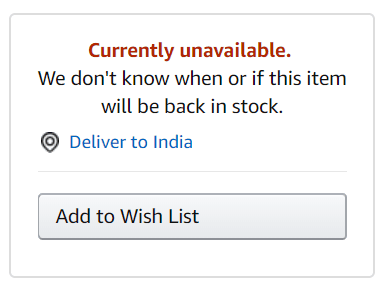
Amazon Scam #6: The Replace & Refund Scam
Returns and refunds are an inevitable part of any business and they can be complicated too. Amazon being a customer-centric company, always favors the buyers, so it’s very easy for them to cheat the sellers. The easiest way to do this is by refunding and returning the scam. A buyer buys your product, requests a refund, and then exchanges it with an exact piece but with an “old and damaged” product. This happens a lot because the seller won’t be able to prove that his product was not defective.

Amazon Scam #7: The Failed Delivery Scam
This scam happens only with the FBM sellers. A buyer purchases your product and then says that the item never arrived. He claims for a refund while sometimes they have received the product. Amazon, as usual, provides a full refund just because the seller can provide proof of delivery. This rarely happens because usually, the shipping carrier takes a customer’s signature during the time of delivery.

Amazon Scam #8: The Listing Hijacking Scam
Amazon has always struggled with counterfeits and the instances have been increasing with every passing day. These sellers list their products on your product detail page at low prices and then win the buy box. So they are eligible for every sale the product gets. Sometimes they also deliver fake or damaged products to the customers, which can drastically decrease the conversion rate with time.
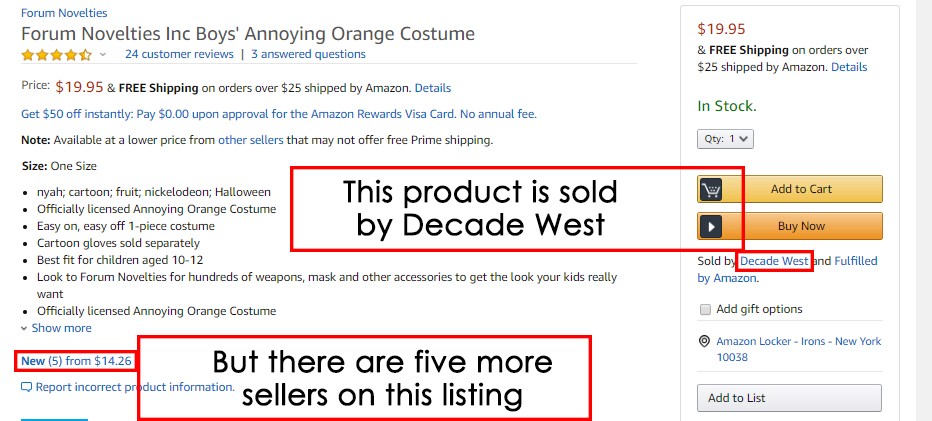
Amazon Scam #9: Listing Copy Infringement Scam
Some sellers have experienced that their listing was changed by Amazon without their knowledge. Sellers intentionally try to influence Amazon to make changes by providing false product claims. Here’s how it works. An evil seller with multiple selling accounts will deliberately file complaints about inaccurate product information. For instance, if you are selling a pack of 10 bottles, he will claim that you are selling a pack of 5. If Amazon received enough complaints about the same, it would make changes in your listing copy. Till the time you realize what had happened, the loss would have been done. Your product could have got a lot of negative reviews and return requests.
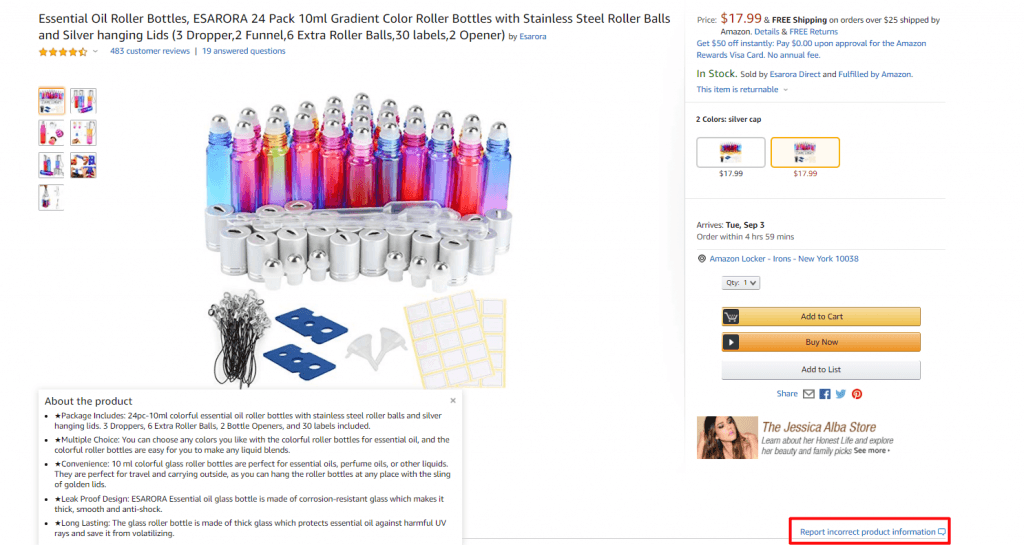
Amazon Scam #10: The Fake Claims Scam:
It is surprisingly easy to get an Amazon listing suspended. As Amazon adopted a guilty until proven innocent attitude, just a few false complaints about a product can get it blocked. If a seller is selling chemical or electronic items, the buyer or your evil competitor can buy the product and claim that it is hazardous. For further investigation, Amazon will immediately suspend the account and the reinstatement process can take up to weeks or months. This can harm your organic ranking and drop down your sales.
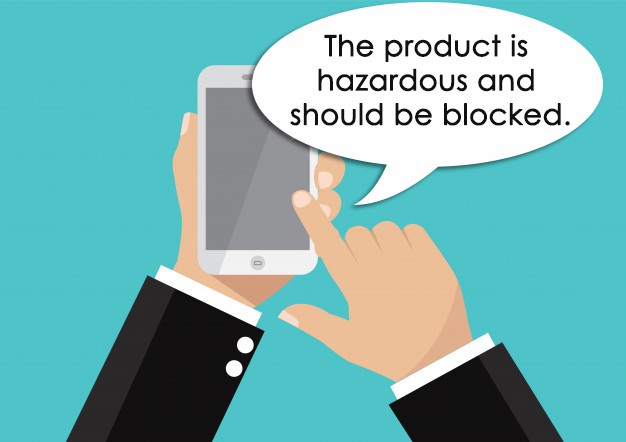
How To Protect Yourself From These Scams?
1) Report To Amazon Immediately:
You can ask your Amazon seller consultant to send an email to Amazon the moment you become the victim of any of these scams. Or you can go to Seller Central’s help section, type your problem, and request them to call back. Politely explain to them what has happened and ask them what should be the next steps. If you have enough proof and a good reputation, Amazon will surely help you out. You can also forward any suspicious emails or information about any suspicious activity to stop-spoofing@amazon.com

2) Keep Your Selling Account Credentials Safe:
Maybe you already know this, but we will again advise you not to share your bank or seller account information with anyone. Even if someone allegedly calls you telling you that he is an Amazon representative and asks you to log in with the code he provides, NEVER do it. It’s a trap and you should inform about such calls to Amazon.
3) Turn On 2-Step Verification:
This is the best way to protect your account and the process is simple too. A seller can sign into his account only via a two-step verification code which will be a random six-digit number. This code is usually sent from Google Authenticator to your smartphones, Amazon’s registered phone number, and Amazon’s registered mail ID. If you have not enabled it yet, do it now.

4) Remember This About URLs And Email IDs:
You must understand the difference between a genuine and a fake email ID. Emails you receive from Amazon will always end with @amazon.com. Don’t believe any other email IDs. Some of the fake email IDs used are as follows:
amazon-security@hotmail.com
sellers-performance@payment-amazon.com
amazon-seller-payments@msn.com
Similarly, the sites ending with.amazon.com are authentic. It is reported that the site with the URL: https://sellercentral-secure-amazon.com is often used to get sellers to log in. Also, always watch out for grammatical or spelling errors in emails, if you see that it’s a danger sign.
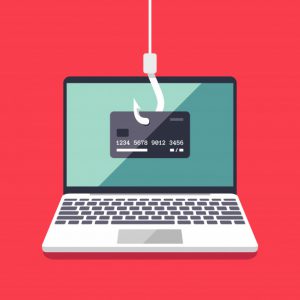
5) Maintain A Good Reputation:
When you are prey to scams like return and refund or failed delivery, then a good reputation might help you. If Amazon believes that you care about your customers and you have good account health and a timely customer reply ratio, then Amazon will favor you over the fraud customers. This is something your Amazon SEO consultant should take care of.
6) Use FBA:
FBA will protect you from failed delivery scams and from buyers who make false delivery claims.
7) Register Your Brand:
The brand registry will protect your listings from counterfeit and it will also help customers build trust in your brand. They will be able to identify the difference between quality products and cheap products. Plus brand registered sellers can fight back with hijackers more efficiently.
A Little Alertness Can Save You Big
Amazon scams aren’t common, but they are avoidable. If you stay proactive and take proper steps to protect your banking information, account details, and your products, then you might not even face such situations. But still, if you are targeted, you know what to do (and what not to). Share this blog with your fellow sellers as well, so we all can unite and stand against the scammers. If you need any help dealing with your Amazon business, then please contact our Amazon consultants.
Amazon scams are not new. They have been around for quite a while. With the increasing number of sellers and a low barrier for entry, the risk of seller fraud has been increasing. A recent study claimed that 100 new counterfeit accounts are made daily.
But Can That Ever Happen To You?
Well, the scammers are getting more and more smart and sophisticated day by day. They thoroughly know Amazon and try to use convincing language in their emails. You could be scammed and you might not even have a hint about it. These scams tend to increase a lot in the hustle and bustle of the holiday season. With the quarter four being round the corner, you should also be aware of the scams that are going on Amazon. Our Amazon consulting experts have created a list of 10 most common Amazon scams you should be aware of.
10 Most Common Amazon Scams:
Amazon Scam #1: The Phishing For Account Info Scams
Phishing is a term used when a scammer sends fake email ID posing as Amazon and tries to acquire the personal details from you. First, they send a mail containing links to the seller and when clicked the links will redirect to a whole new space which will ask for your account credentials and credit card information. Amazon has introduced two-step verification code to circumvent the increase of phishing scams. Even if you are not aware of phishing scams, you should read about them because it is one of the most common types of scams.

Amazon Scam #2: The Amazon / eBay Dropshipping Scams
Ever received an eBay order in the Amazon box? At present, thousands of sellers are trying to make quick money by selling Amazon products on eBay at inflated prices. Whenever an order is received, the drop shipper will purchase the same product from Amazon, deliver it to the customer, and keep the difference.
How is that bad? Recently, these fraud drop shippers have been buyingand filing bogus A-Z claims after the product is delivered to eBay customers. This way the drop shipper gets the refund and also the price from the eBay buyer. And the poor Amazon seller has to lose FBA fees as well as the cost of the product. They don’t just harm financially, but such returns also harm sellers’ reputations, which can also lead to account suspension.

Amazon Scam #3: The Review Scams
Competition is fierce in Amazon and sometimes it gets sour. Sellers try to harm other sellers’ credibility by writing fake reviews, which are also “verified.” This can destroy a seller’s reputation and the sales can drop drastically. Some sellers also upvote the existing negative reviews by clicking “yes” or “was it helpful.” They do it until the review is prominently reflected on the detail page. In some cases, such tricks have been shown to reduce conversion rates by 50%.

Amazon Scam #4: The Sponsored Ads Scams
If your Amazon PPC budget is exhausted at the starting of the day itself, then beware, you are a victim of Amazon Sponsored Ad Click scam. Your competitors can click on your Amazon Sponsored Product Ads until your budget is completely exhausted. This not only increases your spend and ACOS way too much but also decreases your conversion rates to a greater extent. They usually do this on weekends when sales tend to be high and there is no one to keep a watch on.

Amazon Scam #5: The Inventory Tie Up Scam
A malicious seller can use a real or fake credit card to buy all your inventory just before the holiday season so that you have no products to sell during the busiest time of the year. Even worse, these sellers can list their products on your listing to make more sales. Once the holiday season ends, the evil sellers return the products and get a refund. You can combat such scams by setting quantity limits on the number of units sold per transaction.

Amazon Scam #6: The Replace & Refund Scam
Returns and refunds are an inevitable part of any business and they can be complicated too. Amazon being a customer-centric company, always favors the buyers, so it’s very easy for them to cheat the sellers. The easiest way to do this is by refunding and returning the scam. A buyer buys your product, requests a refund, and then exchanges it with an exact piece but with an “old and damaged” product. This happens a lot because the seller won’t be able to prove that his product was not defective.

Amazon Scam #7: The Failed Delivery Scam
This scam happens only with the FBM sellers. A buyer purchases your product and then says that the item never arrived. He claims for a refund while sometimes they have received the product. Amazon, as usual, provides a full refund just because the seller can provide proof of delivery. This rarely happens because usually, the shipping carrier takes a customer’s signature during the time of delivery.

Amazon Scam #8: The Listing Hijacking Scam
Amazon has always struggled with counterfeits and the instances have been increasing with every passing day. These sellers list their products on your product detail page at low prices and then win the buy box. So they are eligible for every sale the product gets. Sometimes they also deliver fake or damaged products to the customers, which can drastically decrease the conversion rate with time.

Amazon Scam #9: Listing Copy Infringement Scam
Some sellers have experienced that their listing was changed by Amazon without their knowledge. Sellers intentionally try to influence Amazon to make changes by providing false product claims. Here’s how it works. An evil seller with multiple selling accounts will deliberately file complaints about inaccurate product information. For instance, if you are selling a pack of 10 bottles, he will claim that you are selling a pack of 5. If Amazon received enough complaints about the same, it would make changes in your listing copy. Till the time you realize what had happened, the loss would have been done. Your product could have got a lot of negative reviews and return requests.

Amazon Scam #10: The Fake Claims Scam:
It is surprisingly easy to get an Amazon listing suspended. As Amazon adopted a guilty until proven innocent attitude, just a few false complaints about a product can get it blocked. If a seller is selling chemical or electronic items, the buyer or your evil competitor can buy the product and claim that it is hazardous. For further investigation, Amazon will immediately suspend the account and the reinstatement process can take up to weeks or months. This can harm your organic ranking and drop down your sales.

How To Protect Yourself From These Scams?
1) Report To Amazon Immediately:
You can ask your Amazon seller consultant to send an email to Amazon the moment you become the victim of any of these scams. Or you can go to Seller Central’s help section, type your problem, and request them to call back. Politely explain to them what has happened and ask them what should be the next steps. If you have enough proof and a good reputation, Amazon will surely help you out. You can also forward any suspicious emails or information about any suspicious activity to stop-spoofing@amazon.com

2) Keep Your Selling Account Credentials Safe:
Maybe you already know this, but we will again advise you not to share your bank or seller account information with anyone. Even if someone allegedly calls you telling you that he is an Amazon representative and asks you to log in with the code he provides, NEVER do it. It’s a trap and you should inform about such calls to Amazon.
3) Turn On 2-Step Verification:
This is the best way to protect your account and the process is simple too. A seller can sign into his account only via a two-step verification code which will be a random six-digit number. This code is usually sent from Google Authenticator to your smartphones, Amazon’s registered phone number, and Amazon’s registered mail ID. If you have not enabled it yet, do it now.

4) Remember This About URLs And Email IDs:
You must understand the difference between a genuine and a fake email ID. Emails you receive from Amazon will always end with @amazon.com. Don’t believe any other email IDs. Some of the fake email IDs used are as follows:
amazon-security@hotmail.com
sellers-performance@payment-amazon.com
amazon-seller-payments@msn.com
Similarly, the sites ending with.amazon.com are authentic. It is reported that the site with the URL: https://sellercentral-secure-amazon.com is often used to get sellers to log in. Also, always watch out for grammatical or spelling errors in emails, if you see that it’s a danger sign.

5) Maintain A Good Reputation:
When you are prey to scams like return and refund or failed delivery, then a good reputation might help you. If Amazon believes that you care about your customers and you have good account health and a timely customer reply ratio, then Amazon will favor you over the fraud customers. This is something your Amazon SEO consultant should take care of.
6) Use FBA:
FBA will protect you from failed delivery scams and from buyers who make false delivery claims.
7) Register Your Brand:
The brand registry will protect your listings from counterfeit and it will also help customers build trust in your brand. They will be able to identify the difference between quality products and cheap products. Plus brand registered sellers can fight back with hijackers more efficiently.
A Little Alertness Can Save You Big
Amazon scams aren’t common, but they are avoidable. If you stay proactive and take proper steps to protect your banking information, account details, and your products, then you might not even face such situations. But still, if you are targeted, you know what to do (and what not to). Share this blog with your fellow sellers as well, so we all can unite and stand against the scammers. If you need any help dealing with your Amazon business, then please contact our Amazon consultants.
Amazon scams are not new. They have been around for quite a while. With the increasing number of sellers and a low barrier for entry, the risk of seller fraud has been increasing. A recent study claimed that 100 new counterfeit accounts are made daily.
But Can That Ever Happen To You?
Well, the scammers are getting more and more smart and sophisticated day by day. They thoroughly know Amazon and try to use convincing language in their emails. You could be scammed and you might not even have a hint about it. These scams tend to increase a lot in the hustle and bustle of the holiday season. With the quarter four being round the corner, you should also be aware of the scams that are going on Amazon. Our Amazon consulting experts have created a list of 10 most common Amazon scams you should be aware of.
10 Most Common Amazon Scams:
Amazon Scam #1: The Phishing For Account Info Scams
Phishing is a term used when a scammer sends fake email ID posing as Amazon and tries to acquire the personal details from you. First, they send a mail containing links to the seller and when clicked the links will redirect to a whole new space which will ask for your account credentials and credit card information. Amazon has introduced two-step verification code to circumvent the increase of phishing scams. Even if you are not aware of phishing scams, you should read about them because it is one of the most common types of scams.

Amazon Scam #2: The Amazon / eBay Dropshipping Scams
Ever received an eBay order in the Amazon box? At present, thousands of sellers are trying to make quick money by selling Amazon products on eBay at inflated prices. Whenever an order is received, the drop shipper will purchase the same product from Amazon, deliver it to the customer, and keep the difference.
How is that bad? Recently, these fraud drop shippers have been buyingand filing bogus A-Z claims after the product is delivered to eBay customers. This way the drop shipper gets the refund and also the price from the eBay buyer. And the poor Amazon seller has to lose FBA fees as well as the cost of the product. They don’t just harm financially, but such returns also harm sellers’ reputations, which can also lead to account suspension.

Amazon Scam #3: The Review Scams
Competition is fierce in Amazon and sometimes it gets sour. Sellers try to harm other sellers’ credibility by writing fake reviews, which are also “verified.” This can destroy a seller’s reputation and the sales can drop drastically. Some sellers also upvote the existing negative reviews by clicking “yes” or “was it helpful.” They do it until the review is prominently reflected on the detail page. In some cases, such tricks have been shown to reduce conversion rates by 50%.

Amazon Scam #4: The Sponsored Ads Scams
If your Amazon PPC budget is exhausted at the starting of the day itself, then beware, you are a victim of Amazon Sponsored Ad Click scam. Your competitors can click on your Amazon Sponsored Product Ads until your budget is completely exhausted. This not only increases your spend and ACOS way too much but also decreases your conversion rates to a greater extent. They usually do this on weekends when sales tend to be high and there is no one to keep a watch on.

Amazon Scam #5: The Inventory Tie Up Scam
A malicious seller can use a real or fake credit card to buy all your inventory just before the holiday season so that you have no products to sell during the busiest time of the year. Even worse, these sellers can list their products on your listing to make more sales. Once the holiday season ends, the evil sellers return the products and get a refund. You can combat such scams by setting quantity limits on the number of units sold per transaction.

Amazon Scam #6: The Replace & Refund Scam
Returns and refunds are an inevitable part of any business and they can be complicated too. Amazon being a customer-centric company, always favors the buyers, so it’s very easy for them to cheat the sellers. The easiest way to do this is by refunding and returning the scam. A buyer buys your product, requests a refund, and then exchanges it with an exact piece but with an “old and damaged” product. This happens a lot because the seller won’t be able to prove that his product was not defective.

Amazon Scam #7: The Failed Delivery Scam
This scam happens only with the FBM sellers. A buyer purchases your product and then says that the item never arrived. He claims for a refund while sometimes they have received the product. Amazon, as usual, provides a full refund just because the seller can provide proof of delivery. This rarely happens because usually, the shipping carrier takes a customer’s signature during the time of delivery.

Amazon Scam #8: The Listing Hijacking Scam
Amazon has always struggled with counterfeits and the instances have been increasing with every passing day. These sellers list their products on your product detail page at low prices and then win the buy box. So they are eligible for every sale the product gets. Sometimes they also deliver fake or damaged products to the customers, which can drastically decrease the conversion rate with time.

Amazon Scam #9: Listing Copy Infringement Scam
Some sellers have experienced that their listing was changed by Amazon without their knowledge. Sellers intentionally try to influence Amazon to make changes by providing false product claims. Here’s how it works. An evil seller with multiple selling accounts will deliberately file complaints about inaccurate product information. For instance, if you are selling a pack of 10 bottles, he will claim that you are selling a pack of 5. If Amazon received enough complaints about the same, it would make changes in your listing copy. Till the time you realize what had happened, the loss would have been done. Your product could have got a lot of negative reviews and return requests.

Amazon Scam #10: The Fake Claims Scam:
It is surprisingly easy to get an Amazon listing suspended. As Amazon adopted a guilty until proven innocent attitude, just a few false complaints about a product can get it blocked. If a seller is selling chemical or electronic items, the buyer or your evil competitor can buy the product and claim that it is hazardous. For further investigation, Amazon will immediately suspend the account and the reinstatement process can take up to weeks or months. This can harm your organic ranking and drop down your sales.

How To Protect Yourself From These Scams?
1) Report To Amazon Immediately:
You can ask your Amazon seller consultant to send an email to Amazon the moment you become the victim of any of these scams. Or you can go to Seller Central’s help section, type your problem, and request them to call back. Politely explain to them what has happened and ask them what should be the next steps. If you have enough proof and a good reputation, Amazon will surely help you out. You can also forward any suspicious emails or information about any suspicious activity to stop-spoofing@amazon.com

2) Keep Your Selling Account Credentials Safe:
Maybe you already know this, but we will again advise you not to share your bank or seller account information with anyone. Even if someone allegedly calls you telling you that he is an Amazon representative and asks you to log in with the code he provides, NEVER do it. It’s a trap and you should inform about such calls to Amazon.
3) Turn On 2-Step Verification:
This is the best way to protect your account and the process is simple too. A seller can sign into his account only via a two-step verification code which will be a random six-digit number. This code is usually sent from Google Authenticator to your smartphones, Amazon’s registered phone number, and Amazon’s registered mail ID. If you have not enabled it yet, do it now.

4) Remember This About URLs And Email IDs:
You must understand the difference between a genuine and a fake email ID. Emails you receive from Amazon will always end with @amazon.com. Don’t believe any other email IDs. Some of the fake email IDs used are as follows:
amazon-security@hotmail.com
sellers-performance@payment-amazon.com
amazon-seller-payments@msn.com
Similarly, the sites ending with.amazon.com are authentic. It is reported that the site with the URL: https://sellercentral-secure-amazon.com is often used to get sellers to log in. Also, always watch out for grammatical or spelling errors in emails, if you see that it’s a danger sign.

5) Maintain A Good Reputation:
When you are prey to scams like return and refund or failed delivery, then a good reputation might help you. If Amazon believes that you care about your customers and you have good account health and a timely customer reply ratio, then Amazon will favor you over the fraud customers. This is something your Amazon SEO consultant should take care of.
6) Use FBA:
FBA will protect you from failed delivery scams and from buyers who make false delivery claims.
7) Register Your Brand:
The brand registry will protect your listings from counterfeit and it will also help customers build trust in your brand. They will be able to identify the difference between quality products and cheap products. Plus brand registered sellers can fight back with hijackers more efficiently.
A Little Alertness Can Save You Big
Amazon scams aren’t common, but they are avoidable. If you stay proactive and take proper steps to protect your banking information, account details, and your products, then you might not even face such situations. But still, if you are targeted, you know what to do (and what not to). Share this blog with your fellow sellers as well, so we all can unite and stand against the scammers. If you need any help dealing with your Amazon business, then please contact our Amazon consultants.






